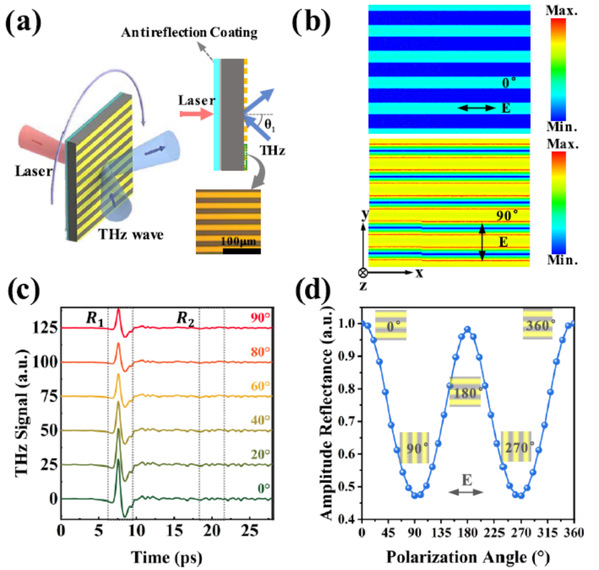RESEARCH
RESEARCH
Important advances in terahertz Fabry-Perot interference
2022-12-27 浏览次数:13
In the electromagnetic spectrum, the frequency range of terahertz waves is 0.1 THz-10 THz, and the corresponding wavelength range is 30 μm-3000 μm. Terahertz wave is between microwave and infrared wave, and it is in the cross field of electronics and photonics. Its special band position determines that terahertz wave has many unique properties, such as low photon energy, strong penetration, wide instantaneous bandwidth and so on. This makes terahertz technology have a wide application prospect in many disciplines and fields, such as biology, medicine, national defense and security, chemistry, agronomy, astronomy and communications, so it has become one of the research hotspots in many countries. In the application of terahertz technology, the mismatch of refractive index of different materials at the interface of terahertz devices leads to Fabry-Pérot interference in incident terahertz waves, which seriously affects the performance of terahertz devices and systems (such as deteriorating signal-to-noise ratio, reducing spectral resolution and measurement accuracy, etc.), which is one of the key problems faced by terahertz devices and systems.
To solve this problem, the traditional passive terahertz de-reflection method, although effective to a certain extent, has many drawbacks, in particular, it cannot completely eliminate the Fabry-Pérot interference induced by broadband wide-angle incident terahertz waves. To this end, the Weien Lai terahertz research group of the School of instrument Science and Optoelectronic Engineering of Hefei University of Technology has proposed a new idea and method to actively regulate the antireflection characteristics of terahertz, which can not only work effectively under the excitation of low power near infrared light, but also completely eliminate the Fabry-Pérot interference caused by wide-band and wide-angle incident terahertz wave, and greatly improve the performance of terahertz devices and systems. The experimental results show that it can completely eliminate the Fabry-Pérot interference caused by redundant terahertz reflected waves in the broadband terahertz spectrum (0.1-3.0 THz) and wide incident angle range (0 °- 70 °), and has ultra-fast response time (~ 5ps). The research results were published in the authoritative international journal ACS Applied Materials & Interfaces (ACS Appl. Mater. Inter. 2022, 14 (38): 43868-43876), and the research results were reported in November by Justus-Liebig-Universität Gießen in Germany.

Fig 1. Schematic diagram of active terahertz anti-reflection model and terahertz experimental results

Fig 2. Active terahertz anti-reflective film to realize terahertz polarized reflector with adjustable reflectivity

Fig 3. The research results were reported in November by the Justus-Liebig-Universität Gießen in Germany
This research work successfully solved the problem of Fabry-Pérot interference and laid the foundation for the future development of new high-performance terahertz devices and systems. Hefei University of Technology is the first signing unit of this paper, associate researcher Weien Lai of our school is the first author and corresponding author of the paper, and master student Gen Liu is the second author. The research results are supported by the National Natural Science Foundation of China, the Anhui Provincial Key Laboratory of Measurement Theory and Precision Instruments, and the Deutsche Forschungsgemeinschaft. Hefei University of Technology is the first unit of the paper, and Zhejiang University and Justus-Liebig-Universität Gießen in Germany are cooperating units.
Link to article: https://pubs.acs.org/doi/full/10.1021/acsami.2c10186
Link to the November press release from the Justus-Liebig-Universität Gießen in Germany: https://www.uni-giessen.de/de/fbz/zentren/lama/LaMaBdM/GdBdM2022/bdm_home_2022_11
